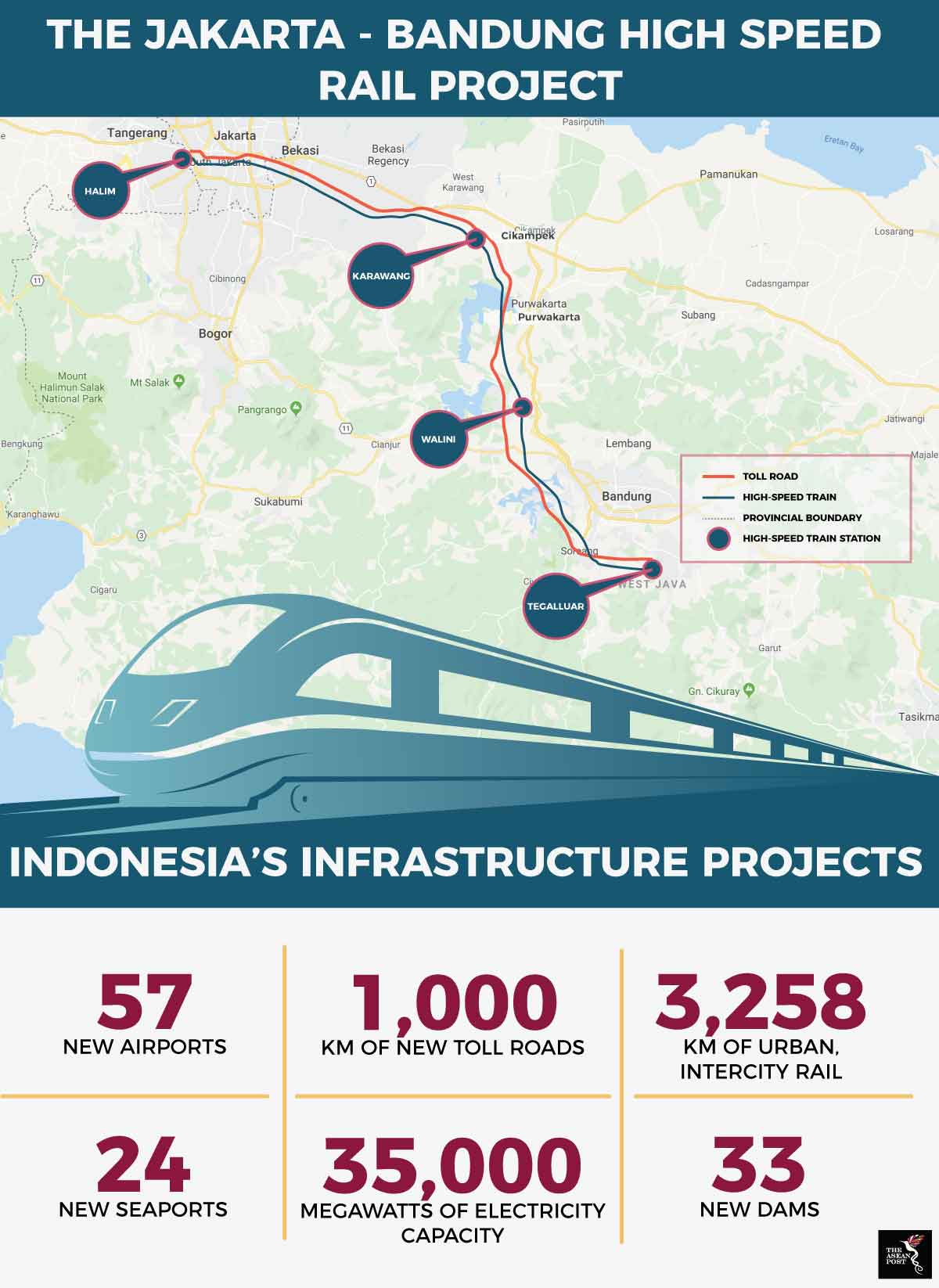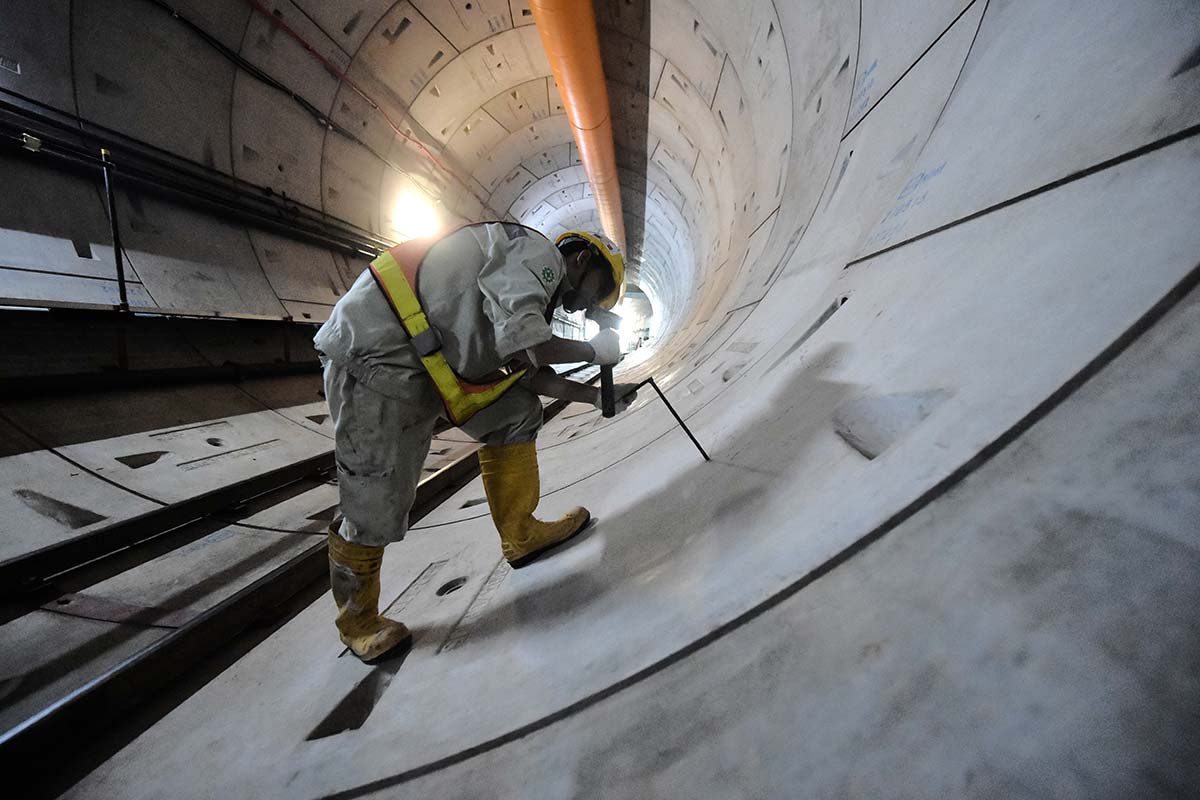Similar to its Southeast Asian counterparts, Indonesia is carrying out ambitious infrastructure projects to transform and modernise the nation. The upgrading of Indonesia’s infrastructure is part of President Joko Widodo’s (Jokowi) Nawa Cita programme – a nine-pillar programme to develop Indonesia. Roughly translated as “Nine Hopes”, the President introduced the agenda when he was elected as the republic’s president in 2014.
Under the programme, Jokowi launched the National Medium-Term Development plan which would be carried out from 2015 to 2019. The plan would see the construction and upgrade of roads in the country. Indonesia plans to build 2,650 kilometres (km) of road and carry out maintenance on an additional 46,770 km of existing roads.
Indonesia is also looking to build 15 new airports, 24 seaports and over 3,000 km of rail. In the agricultural and energy sectors, Indonesia is looking to build 49 new dams. Meanwhile, for the oil and gas industry, the government is planning to build two new oil refining plants with a capacity of 300,000 barrels per day each.
Indonesia’s infrastructure upgrade is not just a facelift for the most populous nation in Southeast Asia but a necessary step the government needs to take if it wants the country to progress. Experts have pointed out that the demand for infrastructure is cyclic in nature. Economic growth leads to increased infrastructure demand, and improved infrastructure leads to even more economic growth. While Indonesia is growing at a steady rate of around five percent a year it has yet to hit the seven percent growth mark that Jokowi promised back during the 2014 presidential election campaign.

Source: Various
Infrastructure gap
Furthermore, according to the World Bank, Indonesia has an infrastructure gap - the difference between required investment spending and actual investment spending - of US$1.5 trillion.
To support such grand infrastructure development, it is estimated that Indonesia’s annual infrastructure expenditure will double from US$82 billion in 2016 to US$165 billion in 2025. Meanwhile, the government there is targeting to spend US$45.7 billion between 2015 and 2019.
This is where the challenge arises as Jokowi could face a difficult task in trying to secure adequate funding for his plans. Reports show that the Indonesian state budget will only be able to fund about US$25 billion for its upcoming infrastructure projects. That number could be less now that Indonesia has spent a large amount of its foreign exchange reserves to stabilise a volatile rupiah.
Indonesia requires a large amount of foreign investment if it is to see through its infrastructure projects. Currently, China is the biggest investor in the country. The economic powerhouse is making large investments throughout Southeast Asia as part of its Belt and Road Initiative (BRI) and is also backing the Jakarta-Bandung High Speed Rail project. China has also agreed to invest in infrastructure development in North Sumatra, North Kalimantan and North Sulawesi as part of the BRI.
However, the country cannot rely on China alone. This probably explains State-Owned Enterprises (SOE) minister, Rini Soemarno’s plea to investors at an investor gathering in Switzerland in June to invest in Indonesian infrastructure.
Indonesia has made various efforts to open up its country to investors. In a report, PwC highlighted that the government there has announced 13 economic policy packages focusing on the deregulation of investment and tax incentives, hoping that it would improve the country’s competitiveness as it makes the investment climate friendlier by cutting beaurocracy.
However, that may not be sufficient. Earlier this year, Indonesia suspended infrastructure projects after a string of accidents. In 2017, the Social Security Management Agency recorded a 10 percent increase in work-related accidents in construction projects. Such accidents do not inspire confidence in investors as they do not want to be associated with construction related accidents nor do they want to see delays in projects that could affect their investments.
There are also complaints that SOEs are dominating the infrastructure projects landscape in Indonesia. Local media have reported that around 37,000 private contractors in the country have gone bankrupt as a result of this. Some observers also argue that the decreasing number of private contractors could harm the economy as it eliminates competition in the market.
Developing infrastructure on an archipelago of 17,000 islands is no easy task, and Jokowi’s ambitions need to be commended. However, the government there needs to be aware of the current situation and be realistic in its goals. Jokowi could face a difficult task in keeping to his promises should he win the upcoming 2019 presidential elections.
Related articles:
BRI debt trap: An unintended consequence?
Indonesia’s e-commerce success story
Indonesian elections: Conservatism versus moderation
